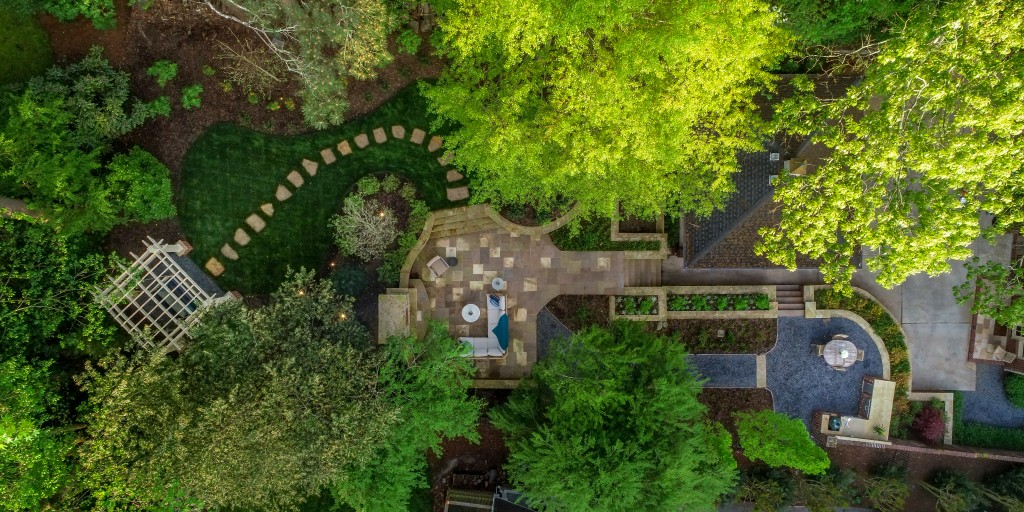Some Known Incorrect Statements About Landscape Design
Table of ContentsAll About Landscape DesignThe Definitive Guide to Landscape DesignLandscape Design - An OverviewWhat Does Landscape Design Do?
When designing a property landscape, the most essential step is to put a strategy on paper. Establishing a plan of attack will certainly conserve you money and time and is a lot more likely to cause an effective layout. Landscape Design. A plan of attack is developed through the 'style process': a detailed approach that considers the ecological problems, your needs, and the aspects and concepts of layoutThe five steps of the layout procedure consist of: 1) carrying out a site supply and evaluation, 2) determining your requirements, 3) producing functional diagrams, 4) creating theoretical layout plans, and 5) attracting a last style plan. The first three actions establish the visual, useful, and gardening requirements for the layout. The last two actions then apply those needs to the production of the final landscape strategy.
This is an essential step for both plant choice and placement and situating family members activities and functions. It is essential because the same environment problems that influence the plantstemperature, humidity, rainfall, wind, and sunlightalso influence you, the individual. The next step is to make a list of your needs and desiresthis aids you determine exactly how your yard and landscape will certainly be utilized.
The useful diagram is then used to locate the activity areas on the site and from this layout a theoretical strategy is established - Landscape Design. The last action is a final layout that consists of all the hardscape and growing information that are essential for installment. Throughout the style process there are ten vital points to take into consideration: for plant selection and activity place by considering what you desire and require to aid identify shapes and organize rooms by assigning activity locations and relating to elements for both the environment and the user by using massing and layering strategies such as change areas and focal factors in the materials, the shades, and the surface appearances for the growth and upkeep of plants by utilizing sustainable style practices A detailed stock and analysis of the site is essential to figure out the environmental conditions for plant development and the very best use of the website
The smart Trick of Landscape Design That Nobody is Talking About
The type of soil figures out the nutrients and wetness offered to the plants. It is always best to utilize plants that will flourish in the existing soil. Although soil can be modified, modification is typically pricey and the majority of times inefficient. Existing vegetation can supply ideas to the dirt kind. Where plants expand well, note the dirt problems and make use of plants with similar growing demands.

Sun/shade patterns, the quantity and length of direct exposure to sunlight or shade (Figure 1), develop microclimates (in some cases called microhabitats). Recording website problems and existing plant recommended you read life on a base map will certainly disclose the place of microclimates in the lawn. Plants usually drop into a couple of of four microclimate categories-full sun, partial color, shade, and deep shade.
Utilities such as power lines, septic storage tanks, below ground energies and roofing overhangs figure out plant place. Use a surveyor's plat of your property for the borders and place of your home.
The Of Landscape Design
Figure out the time and cash you are willing to put into keeping the plants and hardscape-be reasonable about your purposes and capability. Suggested use locations. Credit Scores: Gail Hansen, UF/IFAS There are lots of various landscape layout styles- from basic to facility, however it is handy to pick one to assist your plant and product selection.

Choose if you desire to open your yard, close your backyard, see this page or a little of both, to these sights. To put it simply, do you want the yard to confine the space around you and associate mainly to your home, or do you want the yard to open views and look linked here external, connecting to the surroundings? This will certainly give you a beginning factor to consider a theme.
The 10-Minute Rule for Landscape Design

This is called "feeling of area", which suggests it fits with the environments. There are both form motifs and design themes. Every garden must have a type motif, however not all yards have a style motif. As a matter of fact, several property gardens have no specific style other than to blend with your house by repeating details from the style such as materials, color, and kind.
In a kind theme the organization and shape of the spaces in the yard is based either on the form of the residence, the shape of the locations between your home and the residential property limits, or a favorite form of the homeowner. The type motif identifies the shape and company (the layout) of the areas and the links between them.
